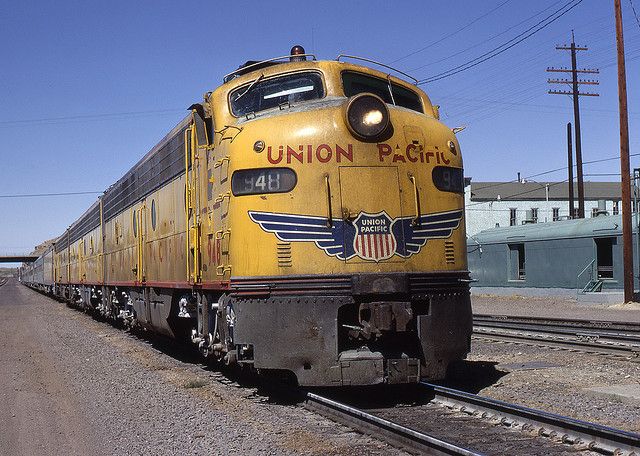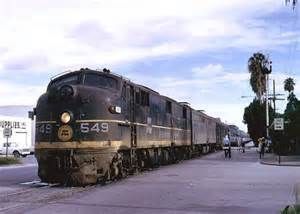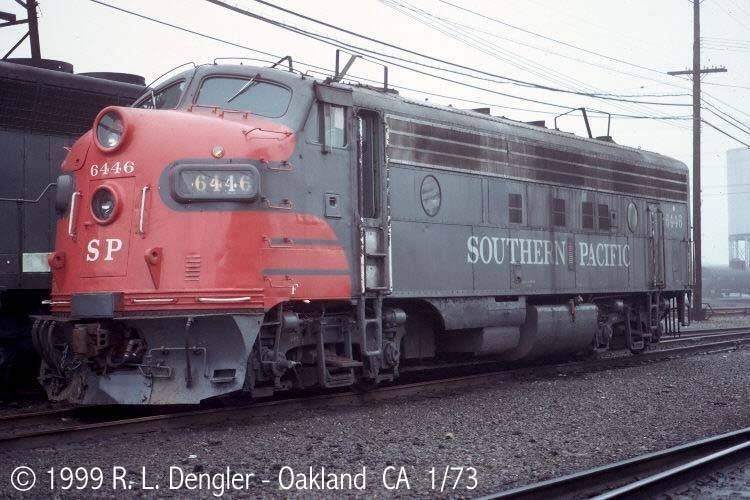AMTRAK musings power etc Part 1 in Tales of the Jointed Track
- Dec. 22, 2015, 8:28 a.m.
- |
- Public
AMTRAK became a government project to keep passenger trains running in 1971. The Class 1 railroads, basically left the passenger business, for more profitable TOFC/COFC, Coal Grain and Red Ball freight traffic. Now being a retired engineer myself, I can see why they did that. Bottom line and the rate of return on the investment. Plus why ride a train from Chicago to LA in three and a half days, when you can take a plane in 3 or 4 hours. Unless you want the nostalgia and have the time.
I interacted with AMTRAK in many ways of my railroad career. I maintained AMTRAK Locomotives when I was in the shops with the BN. I saw AMTRAK 5 and 6 into and out of Denver. Waited for arrival and departure while yarding freights and coal trains, or trying to leave town. They impacted my troubleshooter routine, during the flood re-routes. In La Junta, depending how late the trains were, AMTRAK 3 and 4, were a factor as well. When I did power (Locomotive Utilization) AMTRAK was a positional player. Whether I did the East Desk or the West desk with the Santa Fe, or the South Central Desk or the South West Desk with BNSF, they were there.
Let’s look at a few AMTRAK units and maybe a few tales.
Denver, CO
We had the old CB&Q, Burlington Route Silver E-8’s and the major staple of AMTRAK 5 and 6 between Chicago and Denver. Some were in the pre-merger BN green and the merger BN Cascade green. Overall they were in good condition, and served this part of the route well. When Amtrak started buying their own units, the BN phased these out, and they were placed into Commuter service on the “Race Track” between Aurora, IL and Chicago.

CB&Q / BN E-8 passenger locomotive
AMTRAK bought a bunch of stored Union Pacific E-9 A and E-9 B passenger units. Overall, they were in good shape mechanically. The biggest problem, getting them back on-line was they used a Cardboard waxed outer container, which was steel capped on each end, for the Michianna oil filters. These in normal service were switched out every 20 to 30 days. These sat in cold oil in the Michianna tank and disintegrated over time. This resulted in a heavy sludge, that blocked the drains. The steel caps had to fished out with a magnet. The glop in the bottom, was pumped out, and a mesh screen placed near the drain hole. A light solution was used to flush out the tanks, and allowed drain, if it did. One clean it was wiped out, and new filters were inserted. This took about 8 hours per locomotive, due to two diesel engines per unit.

UP E-9 A-B-A passenger set
Other machinists and electricians, did other repairs and inspections during this time. The crankcases were also drained, and fresh oil placed back in. Oil was checked and more added to fill the void of he Michianna tanks. The water was drained and refilled and a fresh borate solution was added. This additive is a rust inhibitor, and not an antifreeze solution. The units were barred over, then started with the flash cocks open. This insured that any water in the cylinders, would evacuate and not hydraulic the diesel. Once it fired off, two machinists on each end and on each side closed and tightened them off. The diesel was allowed to come up to the normal 180 F operating temperature at idle. Inspections were made at all unions and water pumps for leaks. Radiators were previously blown out, by activating the cooling fans and putting air under high pressure through the fins. Radiators were also checked roof side and in the bottom inspection hatches for leaking.
The electricians, checked for grounds and grounded circuits. Relays for functionality, in the electrical cabinet and the HIGH VOLTAGE busses from the Main generator to the traction motors. Grounded motors were marked and tagged for change out. The main Generator brushes were inspected and changed as needed. The main generator armature was stone honed under rotation, to smooth out any oxidation and flash over marking.
The pipe fitters looked at the air brake piping connections, and the Steam Generators and made change out and repairs as required. The machinists who worked the air racks looked over and changed out various air brake and magnet valves.
The units were sent to a load rack, to see how much actual horsepower the locomotive was making and what problems were showing. When it passed, an inspection and updated FRA Blue card was made and the required signatures placed in. The unit was rotated in service, with 3 other good passenger units and worked under load. One of the units was isolated, so the rebuild was given the full test of reliability. If it passed muster, it was placed in the AMTRAK fleet. The unit was assigned an AMTRAK road number, and that was painted in.
We saw various sad power rotated in the old Seaboard Coast Line E-7’s were the worst. They were finally, moved elsewhere due to repeated failures. The BN told AMTRAK, if you want to continue operating this part of the route, you need better power.

An SCL E-7
Former SP FP-7 and FP-9’s were brought in. They were much better, but showing signs of age.

An SP FP-7. The odd shapes on the roof, are icicle breakers for the tunnels. These allowed to break ice, before the vista domes cars got hit. If you look at the rear breaker, you can see the exhaust port for the steam generator.



Loading comments...